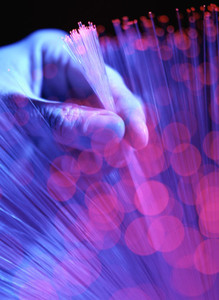With shrinking pipelines, the impending expiration of many drug patents, and the global economic downturn experienced in the last two years causing prescription payers to face budget cuts, generic drugs are becoming an increasingly large player in the economics of the global pharmaceutical industry.
Intellectual property and patenting of the results of the long and arduous route from bench to bedside are seen as the vital link for preserving the commercial–clinical engine that drives life sciences innovation. This is a delicate balance of preserving both innovation in the creation of newer and better treatments for patients and open competition in the marketplace.
Once a drug has passed the rigorous three-phase investigative clinical process and navigated its way through the numerous regulatory hurdles that exist before a drug can be marketed to the public, it has a period of several years of patent protection, where no other competitor can sell a similar product. It is during this period that the pharmaceutical company must recover its expenditure, which can amount from US$800 million to US$2 billion, and make its profit. Once this time is up, the marketplace is open to competition from any company that can prove that its own, similar therapy is equivalent to the original.
The situation for pharmaceutical companies with expiring patents is no more dire than now. In 2011, the patents of many best-selling pharmaceuticals will expire and, by 2014, US$110 billion in global sales will be open to erosion by generic competition. Patent expiration has traditionally been counter-balanced with new product innovation, but the world pharma industry is currently struggling to fill new product pipelines. This is a major reason for the era of mega mergers and acquisitions of smaller companies we find ourselves in as they seek to absorb competitor products into their own organisation. Another result of this is the large increase in active collaborations between the commercial and academic sectors.
An alternative way for a pharmaceutical company to offset the loss of revenue from patent expiration is to create its own generic version of its blockbuster, as is the case with the joint Bristol-Myers Squibb and sanofi aventis blood thinner, Plavix. The patent guaranteeing US market exclusivity for Plavix, the second top-selling anticoagulant in global prescription sales (behind Pfizer's Lipitor) will expire in 2012. In late 2009, the subsidiary company of sanofi aventis, Winthrop Pharmaceuticals, launched its own generic version in Europe, where competitor products were already approved for the market.
With the rise in number and economic importance of generics, we ask the question, will patients still receive the highest quality treatment available for their conditions? The series of six articles that follow will attempt to answer this question, with a focus on comparing the generics approved for market for cardiovascular diseases with those of its predecessors.
Related Articles
The therapeutic equivalence of brand-name and generic narrow therapeutic index (NTI) cardiovascular drugs
The therapeutic equivalence of antiplatelet agents, ACE-inhibitors, statins and alpha-blockers
The clinical equivalence of generic and brand-name calcium channel blockers
The clinical equivalence of brand-name beta-blockers and their generic counterparts
Are generic diuretics clinically equivalent to their brand-name counterparts for the management of cardiovascular disease?
Generic or brand-name drugs for cardiovascular disease? Does the evidence match current opinion?








 0
0











Post your comment